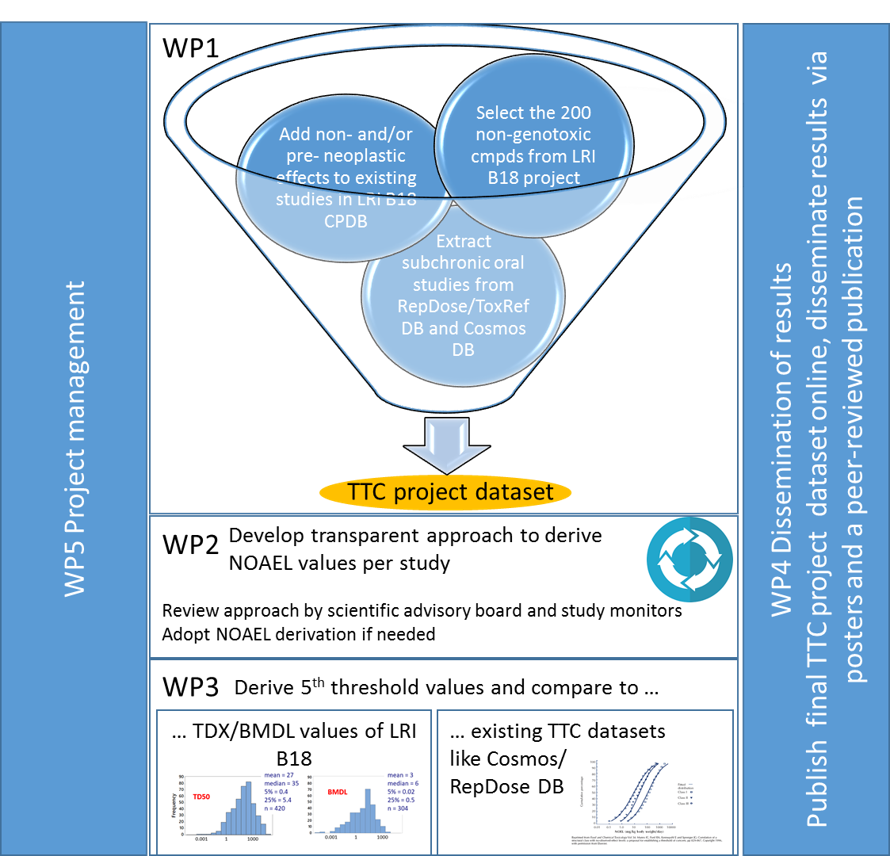Project description
Human carcinogens may act by different modes of action, but generally can be classified as genotoxic or non-genotoxic carcinogens. The TTC concept comprises a threshold for genotoxic compounds that is based on the evaluation of tumor incidences (TD50 values) from the CPDB database (Kroes et al. 2004; Cheeseman et al. 1999; Boobis et al. 2017). Recently, the CPDB database was updated by inclusion of more carcinogenic compounds and recent cancer and chronic studies (Cefic-LRI B18 project – link). A total of 232 compounds were classified as non-genotoxic carcinogens, using a straight-forward decision tree. Following a detailed review of all available peer-reviewed literature, experimental and predicted data, the dataset was reduced to 137 organic compounds.
For these 137 non-genotoxic carcinogens, we aimed to identify most sensitive endpoints and/or points of departure after chronic oral exposure (link to LRI-B18_2 webpage Cefic-LRI). NOEL values were derived from chronic and (if required) subchronic studies after oral exposure using well-established high-quality databases, e.g. RepDose, ToxRefDB, and COSMOS, or peer-reviewed publications. As far as possible, NOEL values were derived from the same study as used in the CPDB database for the calculation of carcinogenic potency (TD50 values).
The dataset includes NOELs for the most sensitive apical effect in the entire study as well as a description of the data quality and reference to the study. Furthermore, the lower benchmark dose level (BMDL) per compound is given. BMDLs were calculated based on tumor incidences with model averaging, as implemented in the Proast software. The minimal BMDL per compound is provided at a benchmark dose risk of 10 percent.
 Fraunhofer Institute for Toxicology and Experimental Medicine
Fraunhofer Institute for Toxicology and Experimental Medicine
